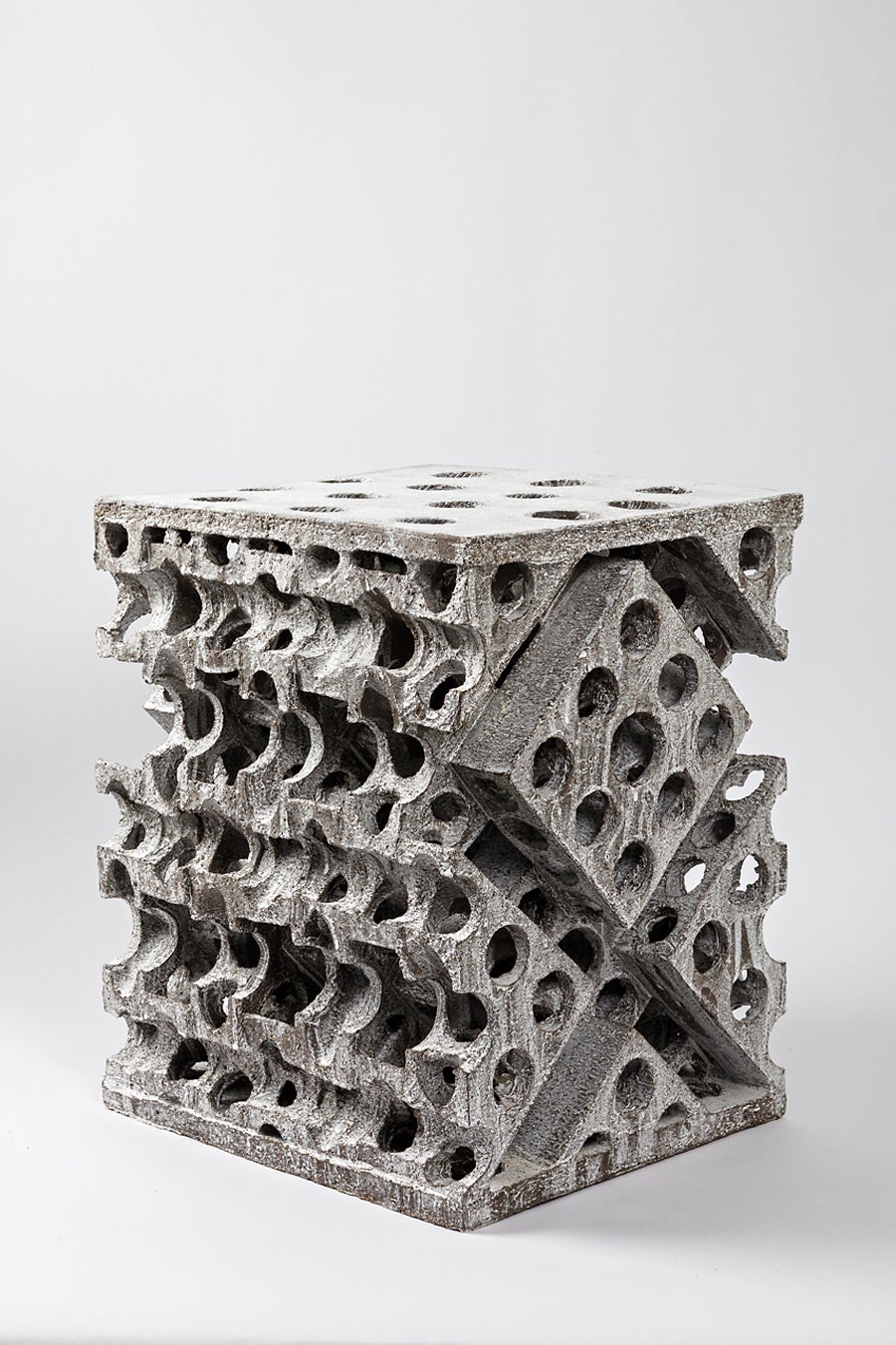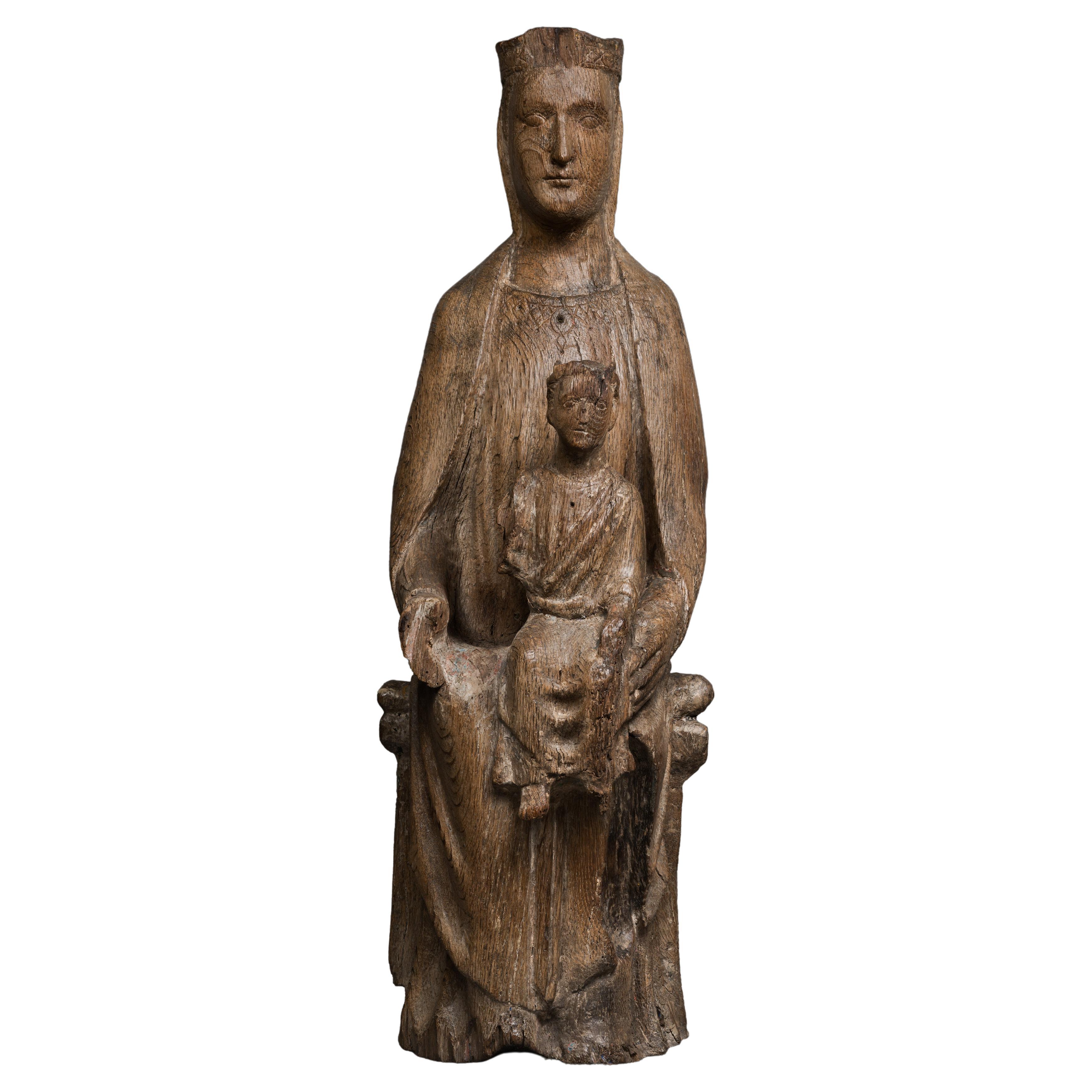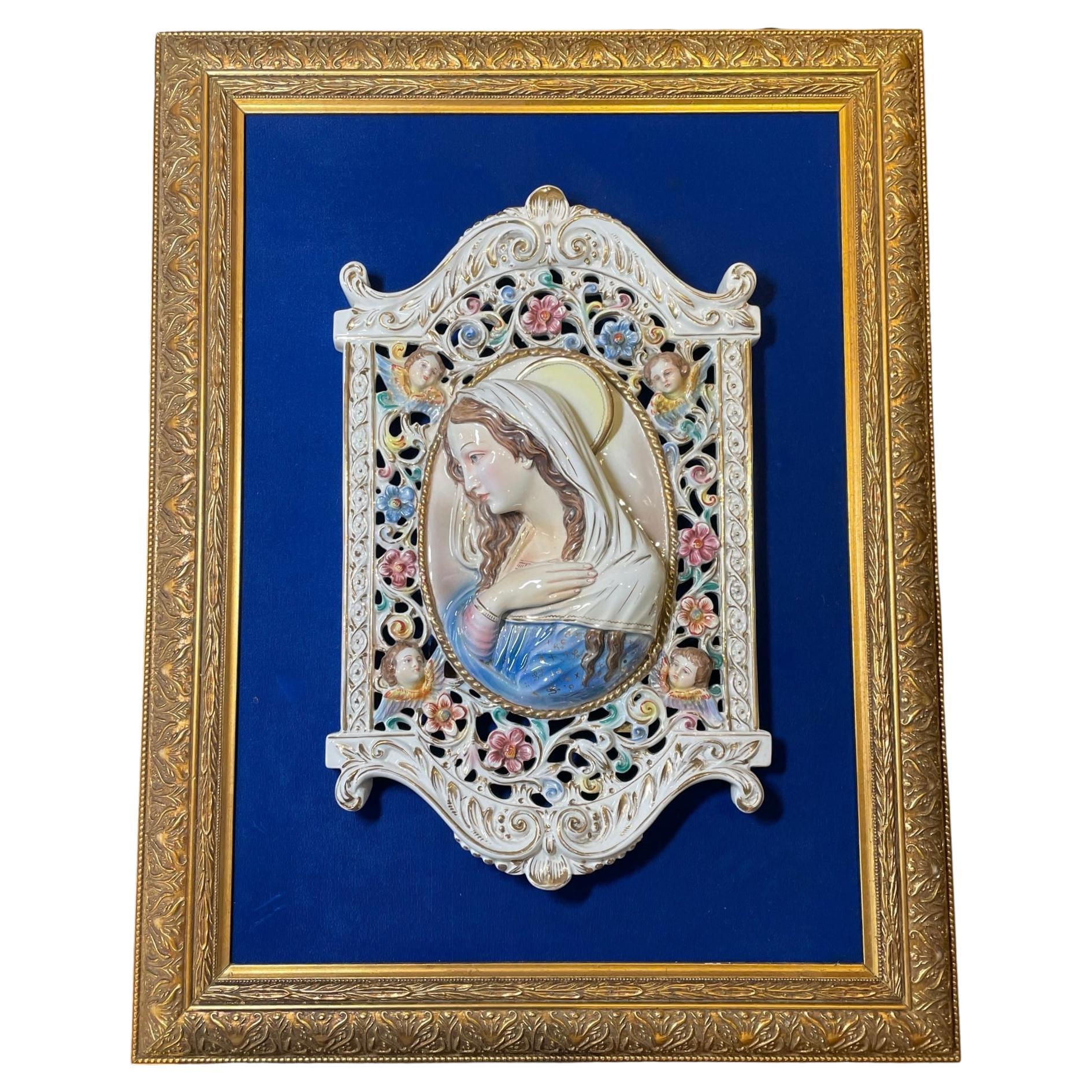Items Similar to Virgin and Child "Sedes Sapientiae", Seat of Holy Wisdom
Want more images or videos?
Request additional images or videos from the seller
1 of 6
Virgin and Child "Sedes Sapientiae", Seat of Holy Wisdom
About the Item
Virgin and child sedes sapientiae, seat of holy wisdom
Origin : Northern Spain, castile, navarre or galicia.
Period : early 13th century.
Height : 85 cm
Length : 23.5 cm
Depth : 19 cm
Important traces of polychromy
Basswood or poplar wood
During the 12th century, the Virgin Mary appears in churches sitting majestically and used as throne by her son. She is called Sedes Sapientiae meaning Seat of Holy Wisdom.
She is then depicted only for her role as Theotokos the mother of God. This function has been proclamed during the Council of Ephesus in 431 when Christ was declared to have been born God.
The figure of the Virgin and Child enthroned was an iconographical theme particularly in vogue during the Middle-Ages. Thanks to pilgrimages this model was depicted evrywhere in Europe : France, Germany, Belgium, Scandinavian countries, England, Italy or Spain.
The Virgin is seating on a throne and presents the Christ Child with her left hand. He is seating frontally, resting on her left knee.
The Virgin wears supple garments, a belted dress with a round neckline and a cloak falling over her right knee in vertical pleats.
Her crowned head shows fine features, a straight nose, a small mouth and a short veil up on her forehead cast backwards.
Jesus is wearing a red cloak over a long tunic from which appear his feet.
The position of the child is not as hieratic and frontal than during the early 12th century nevertheless his face stays oriented towards worshippers. Moreover, from the 13th century onwards the Christ Child will seat sideways.
The similarity between the faces of the Virgin and the Christ Child shows that He really is the progeny of Mary. We can notice the likeness in the profiles and the gazes. The appearance of a middle aged man given to the Christ Child has to express Jesus existed even before his birth from Mary.
All of those characteristics allow us to locate this Virgin and Child in the North of Spain. This sculpture exhibits the diverse influences that the Spanish art received during the early 13th century. Indeed it is with the pilgrims of Santiago de Compostella, bringing with them influences from French Languedoc, Auvergnes and Ile-de-France that the cult of Mary flourished in Spain since the 8th century.
This Spanish Virgin and Child is a fine testimony of the Spanish 13th century art.
Literature
Jacqueline Boccador, Edouard Bresset, Statuaire médiévale de collection, tome I, Les clefs du temps, 1972
Ilene H. Forsyth, The Throne of Wisdom : Wood sculptures of the Madonna in Romanesque France, Princeton University Press, 1972
Galienne Francastel, Le droit au trône, un problème de prééminence dans l’art chrétien d’Occident du IVe au XIIe s, Paris, Klincksieck, 1973
- Dimensions:Height: 33.47 in (85 cm)Width: 9.26 in (23.5 cm)Depth: 7.49 in (19 cm)
- Materials and Techniques:
- Period:
- Date of Manufacture:Early 13th Century
- Condition:Minor structural damages.
- Seller Location:Saint-Ouen, FR
- Reference Number:1stDibs: LU3115329585942

About the Seller
5.0
Vetted Seller
These experienced sellers undergo a comprehensive evaluation by our team of in-house experts.
Established in 2016
1stDibs seller since 2017
153 sales on 1stDibs
Typical response time: 7 hours
- ShippingRetrieving quote...Ships From: Saint-Ouen, France
- Return PolicyThis item cannot be returned.
More From This SellerView All
- Important Sedes Sapientiae Virgin and Child also called "Throne of Wisdom"Located in Saint-Ouen, FRIMPORTANT SEDES SAPIENTIAE VIRGIN AND CHILD ALSO CALLED « THRONE OF WISDOM » ORIGIN: FRANCE, BURGUNDY PERIOD: EARLY 13th CENTURY Height : 75 cm Len...Category
Antique 15th Century and Earlier Figurative Sculptures
MaterialsOak
- Exceptional Virgin and Child in Majesty or "Sedes Sapientiae", Throne of WisdomLocated in Saint-Ouen, FRExceptional virgin and child in majesty or “Sedes Sapientiae”, throne of wisdom Origin: southwestern France. Period: late 12th - early 13th cen...Category
Antique 15th Century and Earlier Figurative Sculptures
MaterialsWalnut
- Virgin and Child in Majesty, also known as "Sedes Sapientae"Located in Saint-Ouen, FRVIRGIN AND CHILD IN MAJESTY, ALSO KNOWN AS "SEDES SAPIENTIAE" ORIGIN : SPAIN, CATALOGNE PERIOD: EARLY 13th CENTURY Height : 95 cm Width : 32 cm Depth : 28 cm Softwood No polychromy In the middle of the 12th century, the Virgin took her place in churches, seated in Majesty, serving as a throne for her son Jesus. She is then called Sedes Sapientiae, meaning the Throne of Wisdom. At that time, she is not represented for herself and only exists because she has been designated as Theotokos, the mother of God, at the Council of Ephesus in 431, where the divine nature of Christ was proclaimed from his birth. The upright and perfectly hieratic bust of this Virgin and Child in Majesty is seated on a throne-bench. She is dressed in a tunic with a rounded neckline and covered with a fine mantle placed on her narrow shoulders. The supple and natural drapery follows the lines of the body. Large curls frame her face with delicate and regular features, a long straight nose, almond-shaped eyes, and small lips. She supports the Infant Jesus with her left hand. Like his mother, he is dressed in a long tunic, and his little feet are visible in the folds. He holds a small sphere in his left hand, while with his right hand, he gestures in blessing. The face of Christ bears a strong resemblance to his mother’s one, and he gives a slight smile. The position of the Child is no longer as hieratic, nor frontal or central as in the early 12th century, but his face still turns towards the faithful. The 13th century indeed emerges as a period of transition in the artistic domain. The statuary, while retaining certain characteristics still belonging to the habits of the previous century, also develops new formal solutions. As a result, Mary maintains a hieratic and frontal position, while her son shifts to place himself well to the left on her knee. Similarly, while the Virgin seems perfectly still, Jesus, on the other hand, appears much more animated, especially in the positioning of his hands. His left hand holds the orb, and judging by the raised right arm directed towards the faithful, one can easily imagine that he was making a gesture of blessing. The influence of the Sedes Sapientiae from previous centuries still seems particularly prevalent in this work. These few characteristics allow dating this Spanish Virgin...Category
Antique 15th Century and Earlier Spanish Gothic Figurative Sculptures
MaterialsSoftwood
- Virgin and Child in MajestyLocated in Saint-Ouen, FRVirgin and child in majesty Origine: castille Epoque: early 14th century Measures: Height: 72cm Length: 30cm Depth: 25cm Polychrome and gi...Category
Antique 15th Century and Earlier Figurative Sculptures
MaterialsWood
- Gothic Virgin and Child with a PhylacteryLocated in Saint-Ouen, FRThis Virgin and Child is wearing clothes with a limited number of folds and showing a thickness characteristic of the Burgundy region. As a result of the presence in the region of th...Category
Antique 15th Century and Earlier French Gothic Figurative Sculptures
MaterialsWalnut
- Gothic Virgin and Child from FlandersLocated in Saint-Ouen, FRExhibition Museum Cantini, 1952, The art of the Middle Ages in the Marseille collections, n°101 Provenance Former collection Louis Bresset (before 1952) Former collection Profe...Category
Antique 15th Century and Earlier Dutch Gothic Figurative Sculptures
MaterialsOak
You May Also Like
- Seated Virgin with Child (Sedes Sapientiae) from the 12th Century in SpainLocated in Madrid, ESTechnique: Tempera and oil on wood Dimensions: 25 x 11 x 8 cm Description: This exceptional work from the 12th century represents the Seated Virgin with Child (Sedes Sapientiae), standing out as an artistic treasure from medieval Spain. The portrayal of the Virgin enthroned with the Child on her lap is emblematic of Romanesque art, and this particular piece is a valuable and authentic example of that era. The current polychromy belongs to the Gothic period and overlays the original Romanesque layer. It is crucial to highlight that the current state of the artwork is the original, without any cleaning interventions, imparting a unique authenticity. The work exhibits architectural characteristics typical of Romanesque art, evident in the sides of the throne. The rigidity and symmetry characteristic of this style are reflected in the firm presentation of the Baby Jesus, noticeable in his gesture while holding his son. The Virgin wears a crown, symbolizing her royal character as the Queen of Heaven and Creation. Both figures retain traces of polychromy on the face and attire, adding layers of history and authenticity. While similar Romanesque Virgin...Category
Antique 15th Century and Earlier Figurative Sculptures
MaterialsFruitwood
- Porcelain Plaque Of The Holy Virgin MaryLocated in Guaynabo, PRThis is a porcelain plaque of the Holy Virgin Mary. It depicts an oval shaped medallion adorned in the center by a high relief profile of the Virgin Mary. Around the medallion is pie...Category
20th Century Unknown Rococo Mounted Objects
MaterialsPorcelain
- Antique Enthroned Virgin Mary and ChildLocated in Doha, QAThis extraordinary museum piece Enthroned Virgin Mary with the child on her lap comes from the Rhone region in France. The saint symbol and protector ...Category
Antique 15th Century and Earlier French Gothic Figurative Sculptures
MaterialsWood, Walnut
- Georges Jouve Virgin and Child, 1944By Georges JouveLocated in Saint Ouen, FRGeorges Jouve Virgin and child Black glazed ceramic with iridescent metallic luster Bears the signature on the back as well as the alpha symbol, c...Category
Vintage 1940s French Figurative Sculptures
MaterialsCeramic
- Ceramic Virgin with ChildLocated in grand Lancy, CHCeramic virgin with child.Category
Vintage 1950s European Figurative Sculptures
MaterialsCeramic
- A Polychrome and Parcel-Gilt Marble Group of the Virgin and ChildLocated in London, GBA Polychrome and Parcel-Gilt Marble Group of the Virgin and Child Attributed to Giovanni Di Balduccio (1317 - 1349) Marble Italy Circa 1330 - 1340 SIZE: 65cm high, 28cm wide - 25½ i...Category
Antique 15th Century and Earlier Italian Figurative Sculptures
MaterialsMarble





